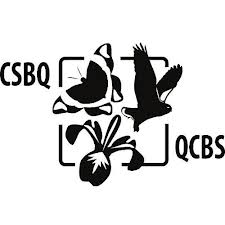Frédéric Boivin

Université du Québec à Montréal
Candidat Ph.D.
superviseur(e): Pedro Peres-Neto
Jonathan Davies
Début: 2013-09-01
Fin: 2017-08-01
Candidat Ph.D.
superviseur(e): Pedro Peres-Neto
Jonathan Davies
Début: 2013-09-01
Fin: 2017-08-01
Projet
THE STUDY OF COMMUNITY STRUCTURE AND SPECIES COEXISTENCE: A FUNCTIONNAL AND PHYLOGENETIC APPROACHOne of the main goals of ecology is to unravel and understand the mechanisms underlying the patterns of species distribution and abundance and their variation in space and time. This endeavor has recently acquired increasing interest and a certain sense of urgency due to worldwide biodiversity decline. However, advances toward this goal have been hindered by our limited capacity to generate general theories applicable across ecosystem and organism types. This is due in large part to the inherent idiosyncrasy of life: nearly all organisms are genetically unique and live in environmental conditions (both biotic and abiotic), which are also unique. If any generalizations are therefore to be found, “common currencies” that could allow us to extrapolate results gathered from one organism to another need to be found. One way to do this is to consider organisms not as independent entities but as entities distributed on a continuum of evolutionary histories and trait compositions. The application of this approach to the understanding of the mechanisms underlying community assembly and dynamics as a function of environmental conditions will be the anchoring point of my thesis. One of the use of species’ phylogenetic and functional information is to infer unmeasured ecological processes from the structure of the community (i.e., are the species more or less similar than expected by chance?). Because functional traits are often unmeasured or the ones important for the studied processes are unknown, community structure is usually measured using the phylogenetic relationship among species. Phylogenies, however, are proxies that represent the expected mean evolutionary results across multiple traits while important traits for the processes at hand might have followed quite a different evolutionary route than the expected mean. Hence, my goal for the first chapter is to develop and test a new method to detect community phylogenetic structure that will account for various evolutionary scenarios. For the second chapter, I will investigate how functional and phylogenetic relationships among species can be used to estimate competitive interactions among tree species. To do so, I will model tree growth and mortality as a function of neighborhood composition and determine which functional form can better link functional and phylogenetic similarity among organisms and the strength of their competitive interactions. In addition, as an increase in phylogenetic and functional variance is known to positively affect ecosystem process rates like productivity through a possible decrease in competition, I will incorporate a measure of neighborhood composition variance in the competition calculation. Finally, and importantly for generalization purposes, I will study the stability of the relationships found between functional and phylogenetic composition and competition for different life-history events (growth and survival), life stages (saplings and adults) and species. The third chapter will focus on the study of tree species’ coexistence as a function of environmental variability. Specifically, I will study the covariation of competitive interactions and environmental variations in both space and time to determine if competition from more similar organisms increases when environmental conditions are more favorable. I will also link these variation to species functional traits. Taken together, these chapters will improve our understanding of the relationships linking species similarity and environmental variability to competition, species coexistence and community dynamics.
Mots-clés
competition, community ecologyPublications
1- A fast and reliable method for the delineation of tree crown outlines for the computation of crown openness values and other crown parametersBoivin, Frédéric, Alain Paquette, Pierre Racine, Christian Messier
2011 Canadian Journal of Forest Research
2- Do position and species identity of neighbours matter in 8–15-year-old post harvest mesic stands in the boreal mixedwood?
Boivin, Frédéric, Alain Paquette, Michael J. Papaik, Nelson Thiffault, Christian Messier
2010 Forest Ecology and Management

